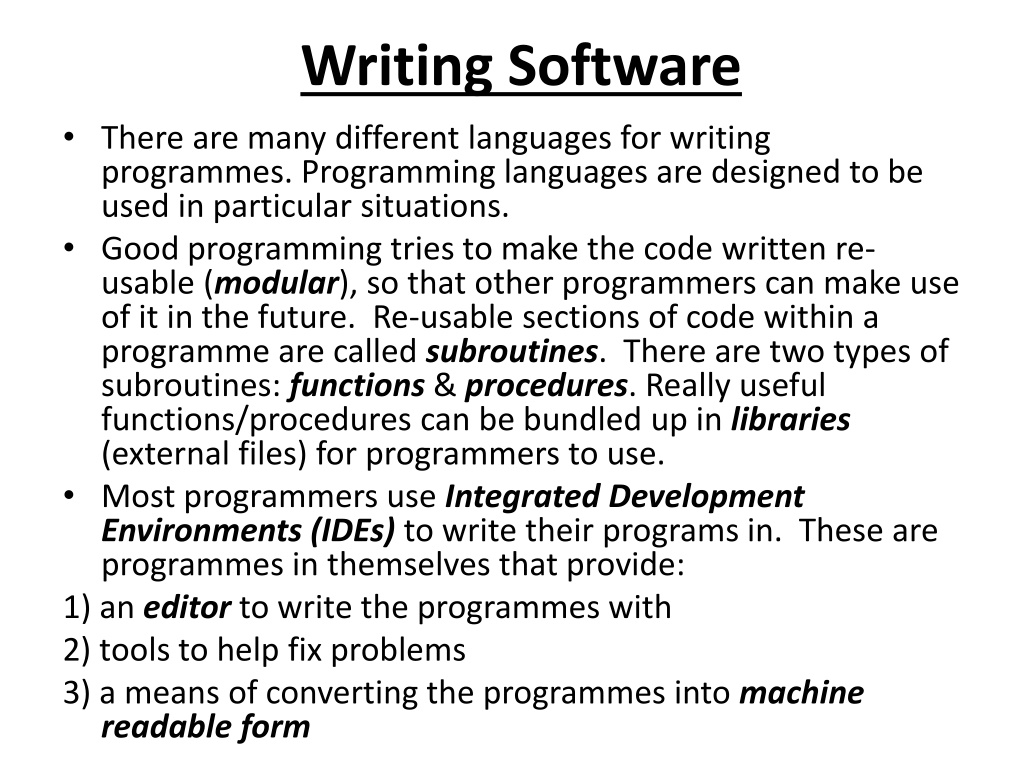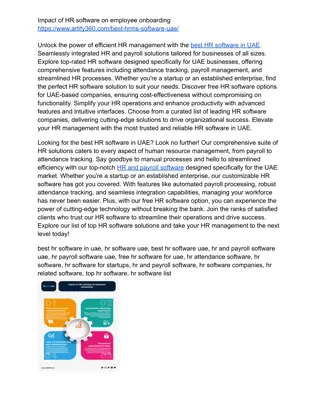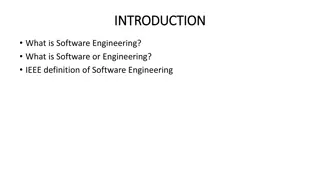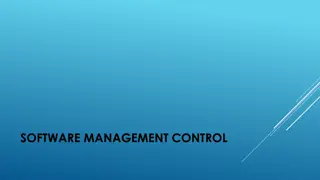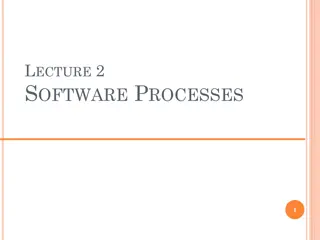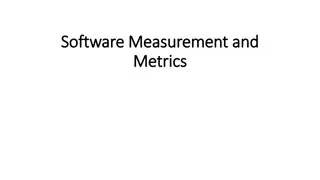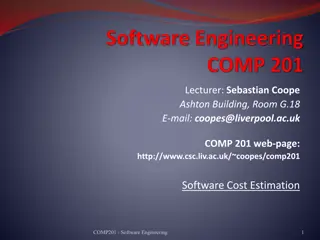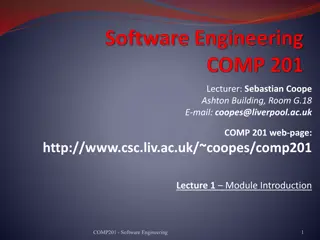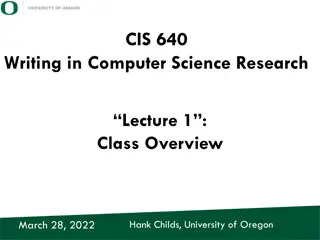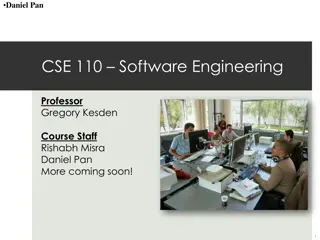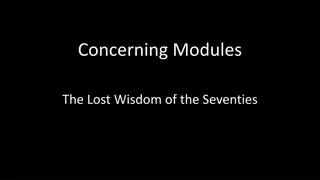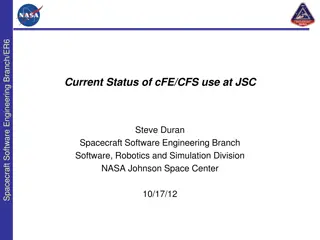Writing Software
The world of programming languages, from high-level to low-level, and understand the importance of reusable code through subroutines. Discover the role of algorithms and pseudocode in software development.
Uploaded on Feb 18, 2025 | 0 Views
Download Presentation

Please find below an Image/Link to download the presentation.
The content on the website is provided AS IS for your information and personal use only. It may not be sold, licensed, or shared on other websites without obtaining consent from the author.If you encounter any issues during the download, it is possible that the publisher has removed the file from their server.
You are allowed to download the files provided on this website for personal or commercial use, subject to the condition that they are used lawfully. All files are the property of their respective owners.
The content on the website is provided AS IS for your information and personal use only. It may not be sold, licensed, or shared on other websites without obtaining consent from the author.
E N D
Presentation Transcript
Writing Software There are many different languages for writing programmes. Programming languages are designed to be used in particular situations. Good programming tries to make the code written re- usable (modular), so that other programmers can make use of it in the future. Re-usable sections of code within a programme are called subroutines. There are two types of subroutines: functions & procedures. Really useful functions/procedures can be bundled up in libraries (external files) for programmers to use. Most programmers use Integrated Development Environments (IDEs) to write their programs in. These are programmes in themselves that provide: 1) an editor to write the programmes with 2) tools to help fix problems 3) a means of converting the programmes into machine readable form
High Level Languages These are used for writing applications software int main() { string FullName; double Hours; double GetHours(string FullName); FullName = GetName(); Hours = GetHours(FullName); cout << "\nEmployee's Name: " << FullName; cout << "\nWeekly Hours: " << Hours << " hours\n\n"; return 0; } This is some C++. This is a very popular language. The other major language is Java. Other high level languages include Basic, Javascript, Python, Fortran, Cobol etc. High level languages have different advantages and disadvantages over each other, depending on how they are to be used. HLL are more like English than Low Level languages and so are easier to use and understand.
Low Level Languages These are used for writing systems software This is machine code and written in hex! It is processor specific and easy to make mistakes in! It is used at a very low level. c7 3c 2a 3c 2a 2b 2a 5c 3c 28 5c 2a 2b 2a 5c 3c 28 5c 2a 2b 2a 5c 3c 28 5c 2a 2b 2a 5c 3c 28 5c 2a 2b 2a 5c 3c 28 5c 2a 2b 2a 5c 3c 28 5c 2a 2b 2a 5c 3c 28 5c 2a 2b 2a 5c 3c 28 5c 2a 2b 2a 5c 3c 28 5c 2a 2b 2a 5c 3c 28 5c 2a 2b 2a 5c 3c 28 5c 2a 2b 2a 5c 3c 28 5c 2a 2b 2a 5c 3c 28 5c 2a 2b 2a 00 00 01 00 00 00 00 00 00 00 00 00 00 MOV AH,09h MOV DX,OFFSET Text INT 21h MOV AX,4C00h INT 21h Text: DB "Hello, World$" SEGMT ENDS END Main This is assembly language. It is also processor specific and is the next level up from machine code.
Algorithms An algorithm is a set of rules which, if followed, will deliver a certain result. Programmers use algorithms to plan their code. This is a bubble-sort algorithm for sorting a list of numbers into order. It is written in psuedocode.
Psuedocode Before writing a programme in a particular language like Java, programmers will usually write in a generalised language called psuedocode. Psuedocode is a language half- way between English and a computer language. It allows a programmer to write quickly, without needing to worry about the exact rules of the computer language that they will eventually end up using.
Flow Charts Flow charts can help plan a programme. They show how data flows through the programme. They can be used for algorithms. The different shapes mean different things. The important ones you need to know are: input/output decision process
Coding 1 Computational thinking means understanding how to represent a problem in a way that a computer will be able to solve. This involves breaking down problems into a series of logical steps such as an algorithm. Decomposition means breaking down a large problem into smaller chunks that can be solved using computing. Abstraction means reducing something to a very simple set of characteristics, chosen to be most relevant to the problem.
Coding 2 Eventually, a programme written in psuedocode will need to be written in a specific language, this is called coding. Every language has a strict set of grammar rules that must not be broken, this is called syntax. Breaking the rules creates a syntax error within the programme. Syntacticly correct programmes may still not behave as expected because of logical errors. Logical errors can only be fixed by testing.
Sequence, Selection, Iteration All programmes work by executing instructions. Controlling the flow of a programme is done through the basic processes of sequence, selection and iteration. The instructions are usually executed in order, in sequence. On occasions, decision instructions (e.g. IF statements), cause jumps in the code out of the normal sequence. This is called selection. Any block of code that needs to be repeated is placed in a loop structure. This is called iteration.
Compilation vs Interpretation A programme written in a high level language must be converted into machine readable form (machine code) before it can be run on a computer. This is done by translator software which either compiles it or interprets it (a compiler or interpreter). Compilation involves converting all the source code (that written by the programmer) into machine code (object code) in one go. The finished compiled machine code programme is then packaged up and can be run again and again. Java is a compiled language. Interpretation involves converting the source code into machine code one line at a time and executing it. This process must be repeated each time the programme is run. Interpreted programmes run more slowly than compiled ones. Javascript is an interpreted language.
Debugging 1 This is the process of finding and fixing problems (bugs) in a programme. Syntax errors can be fixed easily; logical errors are harder to find. Assuming two variables: a=5 and b=6 This snippet of Python 3.2 code shows two syntax errors: 1) No colon at the end of line 1 2) Non-matching quotes inside the print statement if (a > b) print( a is greater than b ) Logical errors will often not prevent a programme from running. They may, however, lead the programme to produce unexpected results!
Debugging 2 A good IDE should provide tools to help debugging like: 1. Setting watches on variables to show what the variables contain at various points 2. Allowstepping through the programme line by line 3. Setting break points (places where the programme is made to pause) 4. Colour coded text.
Debugging 3 Trace variables It can often help to present the values of variables, at various points in a programme, in what is called a trace table. e.g. var x Line 1 0 - var=0 for x in range(0, 3) var=var + 2 1st pass through loop 2 0 2nd pass through loop 4 1 3rd pass through loop 6 2
